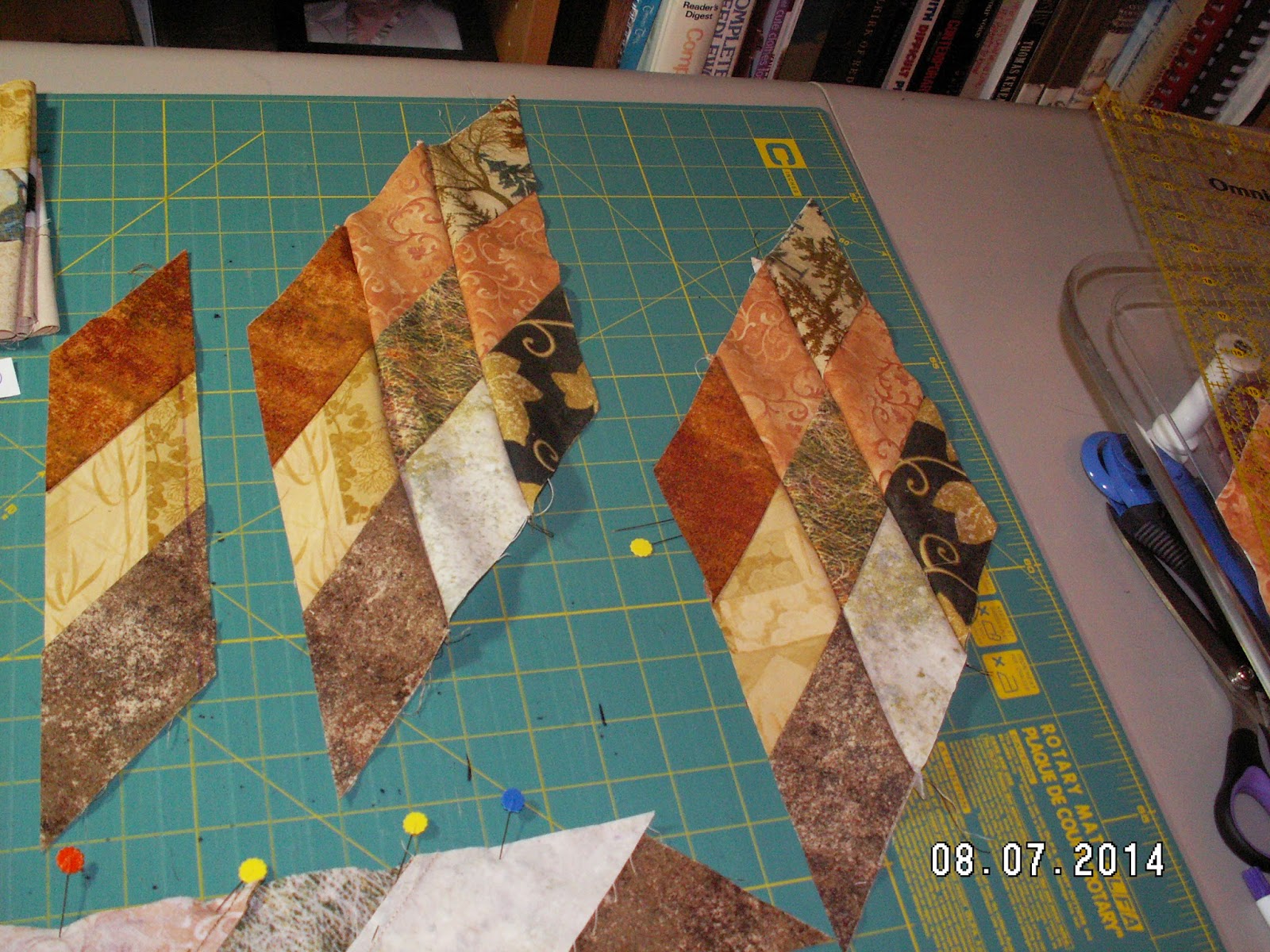Lone Stars Are Tricky!
Lone Stars
I know why they're so "alone"... They are so darn tricky to make!
I think I have now surpassed that in difficulty!
Ten years ago, as a beginner quilter, I attended a novice quilting class in which we learned a ton of basics and a whole lot more! (Thanks, Chris Ludley!)
We were given 2 different quilt block patterns each class to make 2 blocks from each pattern using our light and dark fabrics in different parts of the block. It was so interesting to see how that differing placement dramatically changes the look of the blocks even though the fabric was the same.
In the end we had 16 blocks in total, using 12 different block patterns. It was so much fun to work on something new each Saturday! The only one that had me flummoxed was the LaMoyne Star pattern. Try as I might, after ripping and resewing the seams, I could not get the seams to match well or lie flat! Needless to say, I did not put the leMoyne star blocks in the sampler quilt I made. (I think I tossed them!)
 |
| My sunflower sampler quilt- hand quilted it myself- took almost 3 years to complete! |
Till now, I have never tried that LeMoyne star pattern again, but I do like a challenge and I really don't like to admit defeat. (Bluntly put: I'm stubborn! )
 |
| Auditioning the fabric for background setting squares and triangles |
When I saw the pattern for the Lone Star sampler quilt in a McCall's magazine recently, I debated about giving it a whirl. The clincher was when my husband picked that pattern out of the magazine after I had told him I was contemplating making another king size quilt. (We recently got a new king size bed and now most of my quilts aren't big enough to use on it…)
Make a variety of light and dark strip sets, the pattern stated. Okay I can do that, I thought to myself. Some of the 3 strip sets are 2 light fabrics and 1 dark, or the reverse, 2 darks and a light, or all 3 darks, etc. with 9 different combinations to create 9 different sampler stars.
Cutting the diamond shapes from the strip sets was a bit tricky but as long as you keep recutting your 45 degree angle it works out quite well.
 |
| Some of the strip sets |
Sewing the 3 piece diamonds together was another matter… :(
"To sew segments together, align raw edges, matching at seam lines," it said. Okay, no problem, I thought. But I missed the rest of the sentence…"1/4 inch from raw edges".
Try as I might, none of the seams lined up! I wondered what was going on…
After going online and searching a few lone star sites, I found a You Tube video with some enlightening info...
What the directions SHOULD SAY in BLOCK LETTERS is: "match your seam lines 1/4 inch IN FROM THE RAW EDGES, mark them if necessary, then sew the segments together with a 1/4 inch seam"!
 |
| Draw a line 1/4 inch in from edges using an erasable pen |
 |
| Put pins through the 2 segments at the seams 1/4 inch in from the edges. |
 |
| ...Then carefully pin them together |
 |
| star segments- remember to press well |
Now do the same for those quarter star pieces, starting a quarter inch in and ending a quarter inch before the bottom edge.
To make this easier, use a pencil on the wrong side of fabric to mark a quarter inch seam at the corners. Where those quarter inch lines overlap is the exact point where to start and to stop sewing each segment. This is so that you can later set in the corner squares and corner triangles for your block background. (So far I haven't done that!)
 |
| Quarter star pieces- leave a quarter inch at the start and at the end when sewing them together |
That part requires something called a "y-seam" which sounds tricky… but, once I wash and press my background fabrics, I'm going to give it a shot!
 |
 |
| Looking good so far! |
Labels: Lone Stars











